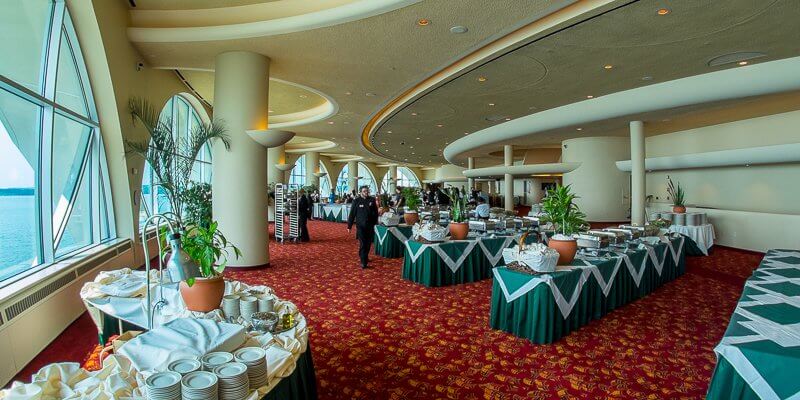Checklist:
Getting Started on Going Green
Most event planners today want to “green” their events. But if you’re just getting underway, the commitment can seem overwhelming. Where do you begin? To get you started, we’ve assembled a list of 12 easy actions to help you infuse sustainability into your planning process.
Food and Beverages
1. Ask if the venue donates food or composts food waste. For example, Monona Terrace and Monona Catering partners with the University of Wisconsin-Madison’s WE CONSERVE composting program, which diverts from landfills about 3,700 pounds of pre-consumer food waste each month. The compost is then used by area farmers and for university landscaping. Food left over from events is donated to local food pantries.
2. Discuss with the caterer local food choices to reduce food transportation costs.
3. Serve water from pitchers and avoid disposable bottles. Likewise, avoid disposable plates, cups and utensils.
4. Ask what recycled or recyclable materials are available. For example, Monona Catering stocks water stations with compostable corn resin cups and uses box lunch packaging made from recycled materials.
5. Relax the rules about keeping buffet containers full to the brim. Tell your attendees you’ve asked the venue to not top off food so that there’s less waste.
Site Selection
6. Pick a venue that’s nearer to airports, train and bus stations, and where people can easily hop on a bus or bicycle to get around.
7. Encourage people to walk to shops or restaurants rather than cab there — maybe even by developing a simple app that allows people to view maps of nearby walking tours. You could even give your attendees pedometers featuring your logo to reinforce your message and provide an event keepsake.
8. Find out if the venue is LEED certified, the certification program of the U.S. Green Building Council. While Monona Terrace became the first convention center in the nation to earn a LEED Silver certification in 2007, and in 2015 earned LEED Gold, the second highest rating possible, others are also trying to achieve certification. Reputable venues should be able to produce documentation that demonstrates their commitment to sustainability.
9. Check out the venue’s cleaning practices to ensure they help protect indoor air quality.
Communication
10. Involve your attendees in your sustainable efforts. In speakers’ remarks or perhaps on-screen, give your guests credit for helping make a positive impact. If you held an event a Monona Terrace, for example, you could tell your audience members that over 52% of the waste stream at Monona Terrace is recycled and that they had a hand in making that happen.
On-Site Supplies
11. If your event is a recurring one, extend the usefulness of your signs year after year by not including dates. It’s environmentally friendly and budget friendly too.
12. Collect badge holders for reuse. To inspire participation, tell attendees that your company will donate a dollar (or five or ten) to a nonprofit for every badge returned. Better yet, choose a few nonprofits and turn the activity into a contest to see which one earns the most. Make sure to announce the winner.
Above all, remember that big things happen when you start small.
Download the checklist here
Looking for a venue that values sustainability? Contact Laura MacIsaac, CMP, director of sales, at 608.261.4016 or lmacisaac@mononaterrace.com.

